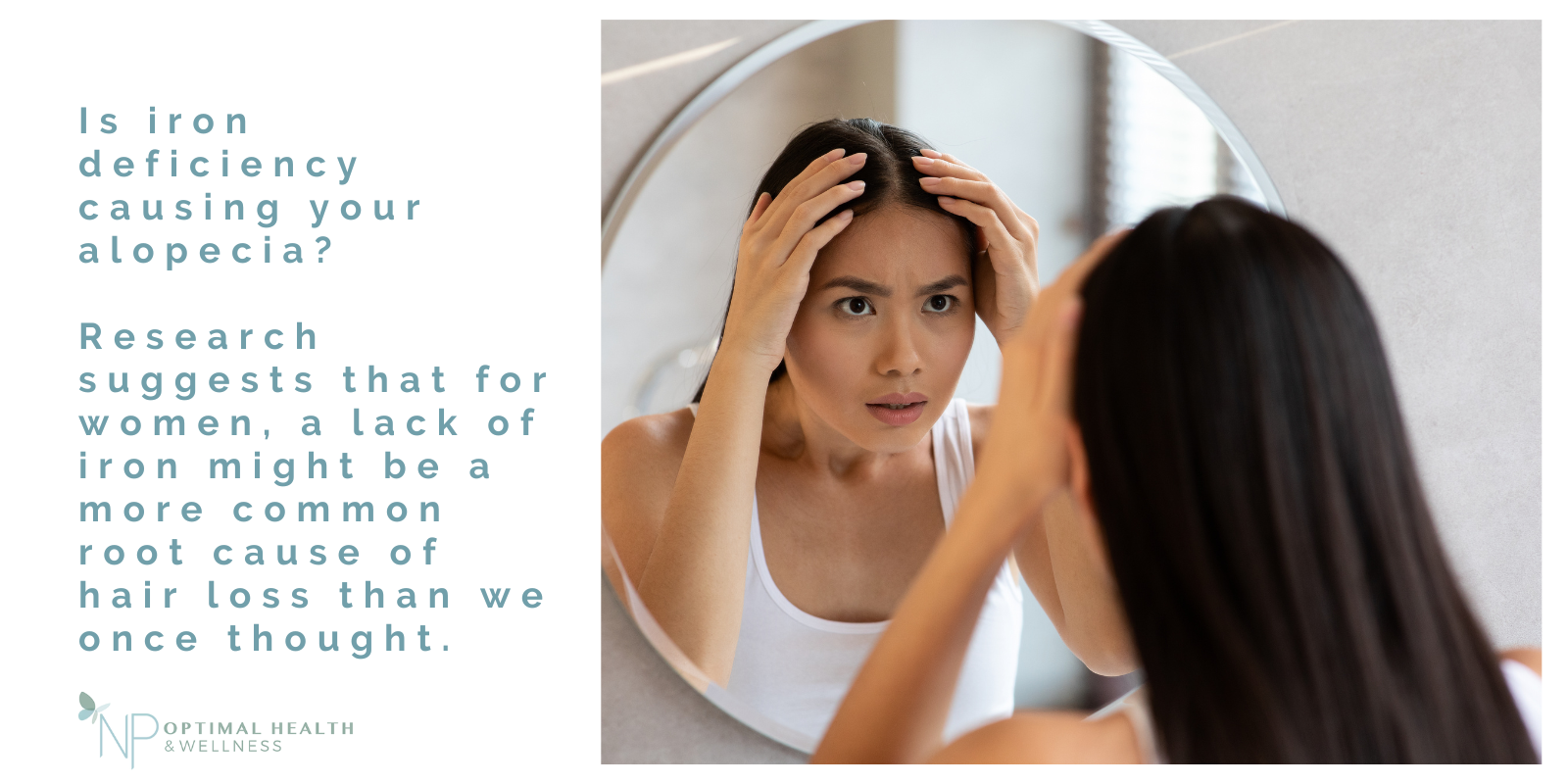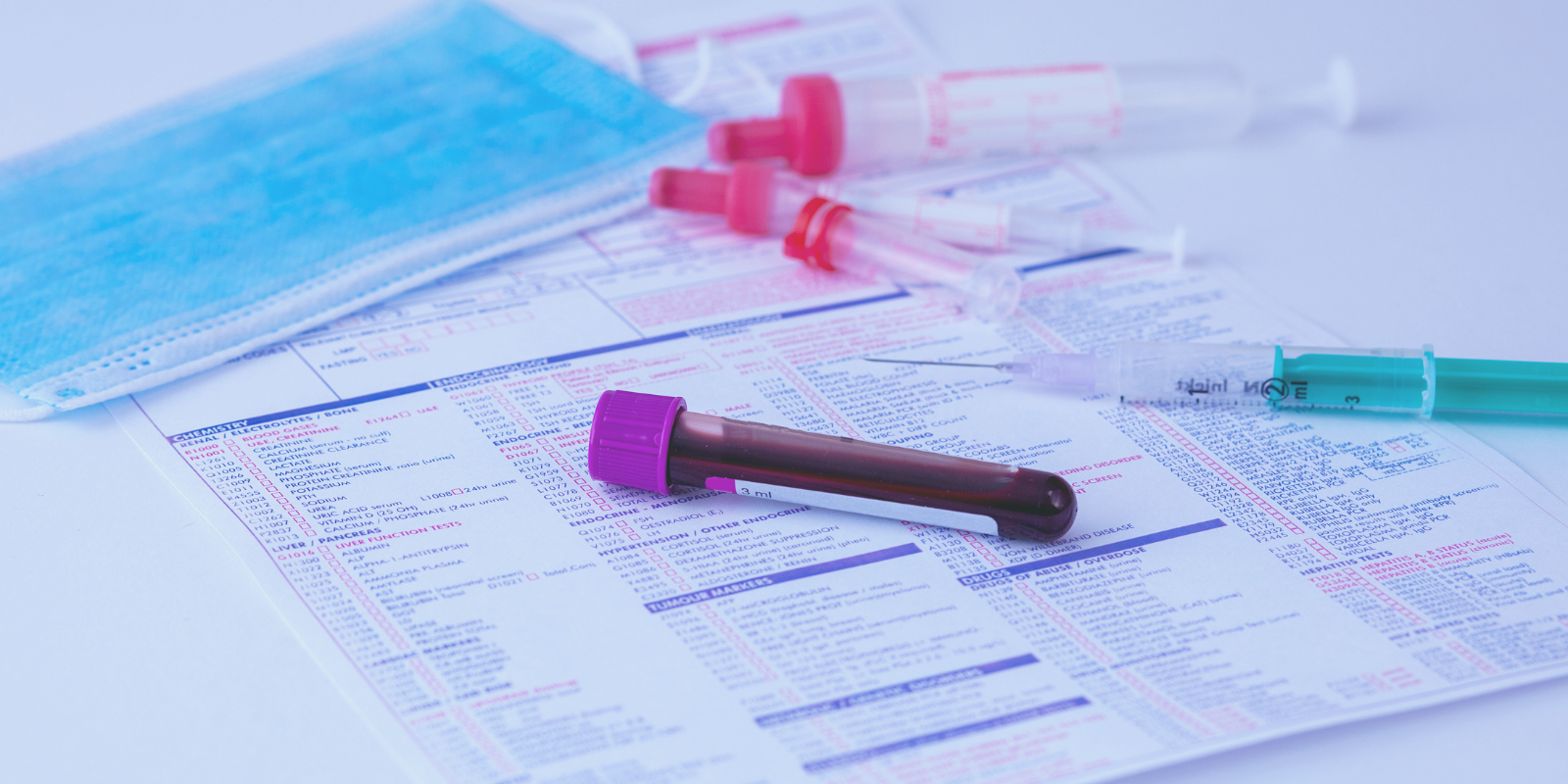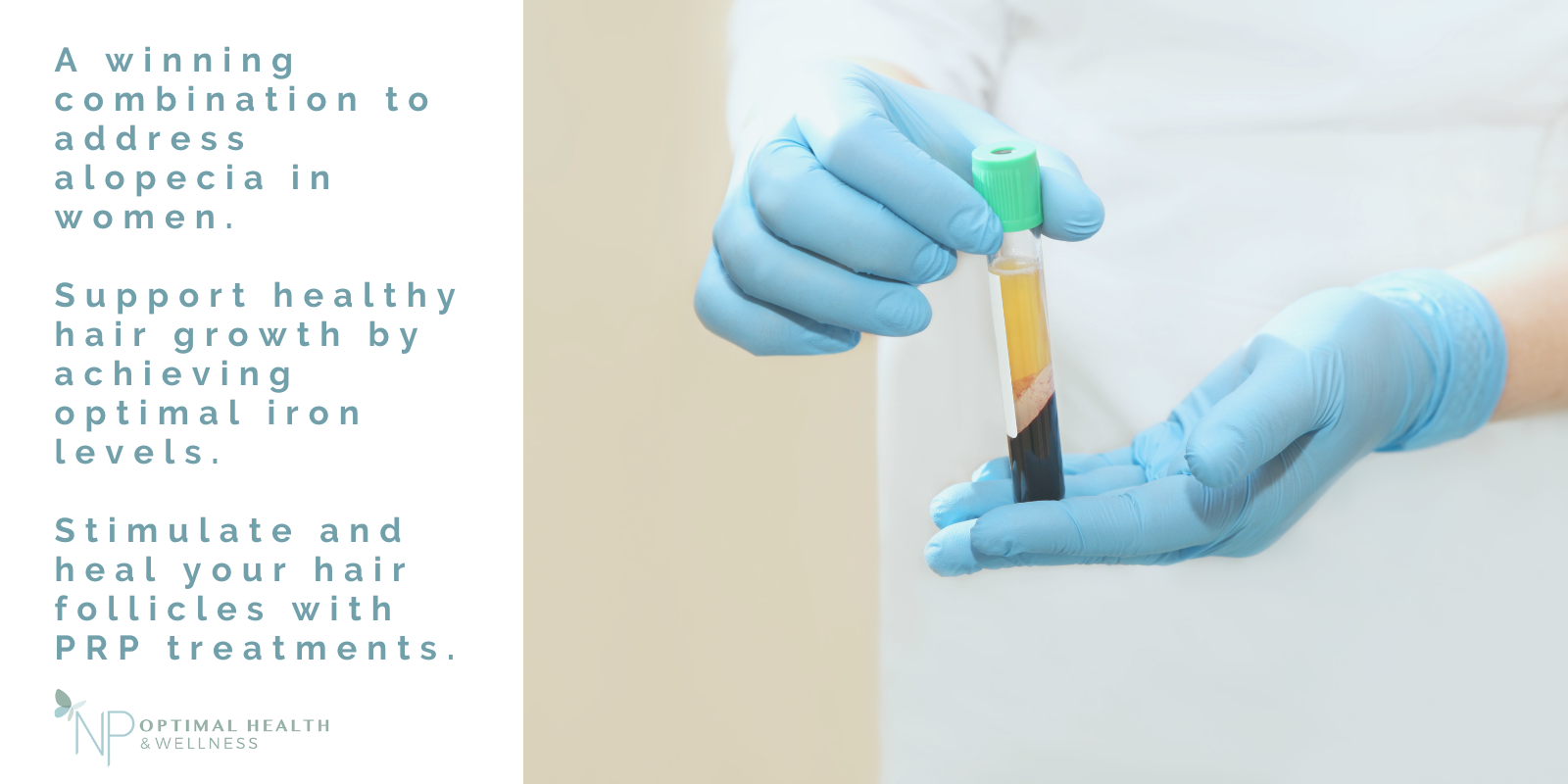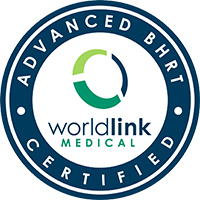Iron Deficiency And Hair Loss In Women: Are Low Iron Levels The Root Cause Of Your Alopecia?
)
Your Low Iron Levels Could Be Causing Your Hair Loss.
If you’re a woman approaching 50 who’s experiencing hair loss, you’re not alone. Recently, hair loss (also known as alopecia) among women has been thrust into the spotlight. By coming forward and sharing their own experiences with alopecia, celebrities like Jada Pinkett Smith and Ricky Lake have created an opportunity for others living with the condition to learn and seek treatment.
The truth is, as many as 40% of women experience thinning hair or more significant hair loss by the time they are 40. It is well-established that the changing hormones associated with pregnancy, birth and menopause cause hair loss in women. But, there are other reasons women lose their hair, too.
An important but lesser known cause of alopecia is iron deficiency.
The Missing Link? Low Iron And Hair Loss In Women.
Iron plays an important role in hair growth. By providing your hair follicles with oxygen, iron helps these cells grow and repair. When you have low iron levels, the health of your hair follicles is compromised. This can lead to more than average shedding and hair loss.
Because of menstruation, pregnancy, and birth iron deficiency is more common among women than it is among men. In fact, as many as 1 in 5 women of childbearing age has iron-deficiency anemia and half of all pregnant women will become iron deficient.
This is interesting to note because hair loss during the postpartum period has long been attributed to hormonal changes. Hormone fluctuations directly influence hair growth and loss. But, as research continues to show us, iron deficiency and hair loss may be more closely connected than we previously thought.
Interestingly, a recent study published in the Journal of Korean Medical Science found that “iron may not only play a role in hair loss, but it may cause hair to fall out in a fashion similar to that of genetic male- and female-pattern baldness.”
Findings like this are important because they offer healthcare providers new avenues to explore when looking for the root cause of alopecia in a patient. Yet, because of the similarities to other types of alopecia, iron deficiency can easily be missed as a contributing factor.
Treating Low Iron With Functional Medicine
Functional medicine views your body’s organs and processes as part of one connected system. So, ordering a robust blood panel is typically one of the first things your health care practitioner will do. Once the results are in, low or less than optimal iron levels can be detected.
If you have low iron levels, functional medicine can help you restore them through diet and supplements. Giving your iron a boost will help support a healthy scalp and healthy hair follicles. In addition, treatments like PRP can help to stimulate the scalp and follicles and can promote more vigorous hair growth and re-growth. Together they are very complimentary.
Eating An Iron-Rich Diet Helps Women Restore Optimal Iron Levels And Nurture Healthy Hair
Eating a healthy, balanced diet is critical for maintaining optimal health and wellness. As a woman, making sure you include iron-rich foods in your diet is especially important. As we’ve seen, being iron deficient can lead to hair loss. But, it can also lead to fatigue, headaches, lightheadedness and other unpleasant symptoms.
Some foods that are iron-rich and easy to incorporate into your daily diet are:
Spinach
Peas
Lean proteins like pork and salmon
Dried fruits like prunes, raisins and apricots
Iron-fortified cereals
If you are a vegetarian or vegan, you may need to add supplements to your diet. Plant-based iron is not as effectively absorbed by your body. This can make maintaining optimal iron levels difficult even with a healthy and well-rounded diet. Always consult with your healthcare provider to select the right supplements for you. Remember, you can have too much of a good thing.
Finally, make sure to include vitamin C-rich foods in your diet. These foods allow your body to absorb iron more efficiently. Oranges, strawberries, tomatoes and even broccoli are all very good sources of Vitamin C.
Stimulate And Support Your Hair Follicles With PRP
While you work to restore optimal iron levels through diet and supplementation, PRP can help to stimulate hair growth. PRP uses your own blood to create a concentrated platelet solution and platelets promote cell growth and regeneration. By injecting the platelet-rich solution into your scalp, blood supply is increased to the hair follicles and hair growth is stimulated.
Achieving Optimal Iron Levels And Stimulating Hair Growth Is A Winning Combination For Women Affected By Alopecia Cause By Iron Deficiency.
Alopecia is a condition that affects nearly half of all women by the age of 50 to some degree. While genetics and hormones are two well-known causes of hair loss among women, research continues to show that iron deficiency also has a role to play.
People in the United States spend over 3.5 billion dollars on products to treat hair loss every year—and most of them simply aren’t effective. Getting to the root cause of your hair loss is important before choosing a treatment option.
The good news is hair loss due to low iron levels can often be reversed. Functional medicine can help you restore optimal iron levels through diet and supplements and, with treatments like PRP, can help you to stimulate and heal your hair follicles. If you’re a woman in the Peterborough area looking to restore your hair, contact us today to learn more about how functional medicine can help.
| Tags:Nutritionwomen's healthPRPHair Loss |









